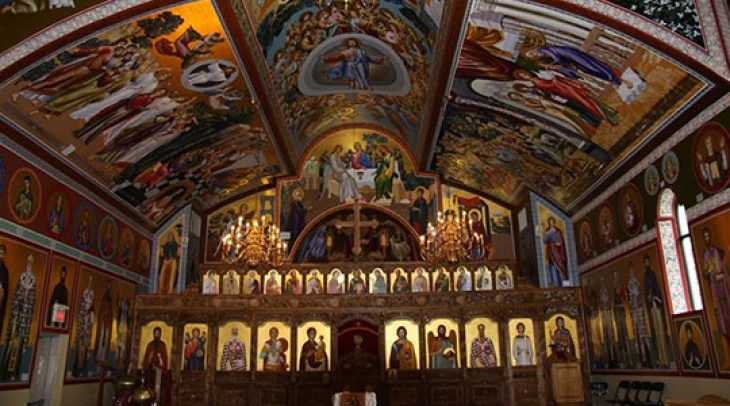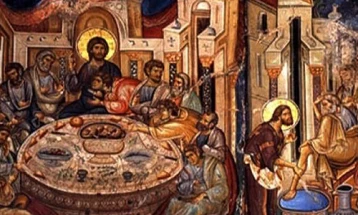Religious calendars
- The daughter of a rich and eminent man, Paphnutius, from Alexandria, she was besought of God by her childless parents, who brought their daughter up in the Christian faith.

8 October 2024 (MIA)
Macedonian Orthodox Church Calendar
Our Holy Mother Euphrosyne
The daughter of a rich and eminent man, Paphnutius, from Alexandria, she was besought of God by her childless parents, who brought their daughter up in the Christian faith. Not wishing to marry, the young Euphrosyne, in order to hide from her father, dressed her in men’s clothing and presented herself to the abbot of a monastery as a eunuch of the Emperor Theodosius with the name of Smaragdus. The abbot received her and placed her under the guidance of the monk Agapetus as spiritual father. By her fasting and prayers, Smaragdus quickly outstripped the other monks in the monastery. When she had spent thirty-eight years in strict asceticism, Paphnutius visited the monastery and the abbot placed him in Smaragdus’s care for prayer and counsel. Smaragdus recognised Paphnutius, but Paphnutius did not recognise her. When her father confessed his grief for his lost daughter, Smaragdus told him not to lose hope, for he would see his daughter again once more in this life, and asked him to come again in three days’ time. When Paphnutius returned, Smaragdus was on her deathbed. Then the dying monk said to Paphnutius: ‘I am Euphrosyne your daughter; you are my father.’ Her father could not for a long time collect himself, for sheer astonishment. Then Euphrosyne breathed her last and her father wept over her. After burying his daughter, Paphnutius remained in the monastery and settled in the cell of his departed holy daughter. After ten years of asceticism, holy Paphnutius entered into rest in the Lord.
Catholic Calendar
Holy Simeon
The “just and devout” man of Jerusalem who according to the narrative of St. Luke, greeted the infant Saviour on the occasion of His presentation in the Temple (Luke ii, 25-35). He was one of the pious Jews who were waiting for the “consolation of Israel” and, though advanced in years, he had received a premonition from the Holy Ghost, Who was in him, that he would not die before he had seen the expected Messiahs. This promise was fulfilled when through guidance of the Spirit he came to the Temple on the day of the Presentation, and taking the Child Jesus in his arms, he uttered the Canticle Nunc dimittis (Luke, ii, 29-32), and after blessing the Holy Family he prophesied concerning the Child, Who “is set for the fall, and for the resurrection of many in Israel”, and regarding the mother whose “soul a sword shall pierce, that, out of many hearts, thoughts may be revealed”. As in the case of other personages mentioned in the New Testament, the name of Simeon has been connected with untrustworthy legends, viz., that he was a rabbi, the son of Hillel and the father of Gamaliel mentioned in Acts, v, 34. These distinguished relationships are hardly compatible with the simple reference of St. Luke to Simeon as “a man in Jerusalem”. With like reserve may we look upon the legend of the two sons of Simeon, Charinus, and Leucius, as set forth in the apocryphal gospel of Nicodemus.







